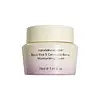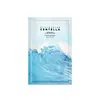What's inside
What's inside
 Key Ingredients
Key Ingredients

 Benefits
Benefits

 Concerns
Concerns

 Ingredients Side-by-side
Ingredients Side-by-side

Water
Skin ConditioningGlycerin
HumectantButylene Glycol
HumectantCaprylic/Capric Triglyceride
MaskingDicaprylyl Carbonate
Emollient1,2-Hexanediol
Skin ConditioningCeramide NP
Skin ConditioningSodium Acrylate/Sodium Acryloyldimethyl Taurate Copolymer
Emulsion StabilisingCetearyl Olivate
Polyisobutene
Hydrogenated Lecithin
EmulsifyingPolyglyceryl-3 Distearate
EmulsifyingSorbitan Olivate
EmulsifyingCetearyl Alcohol
EmollientCarbomer
Emulsion StabilisingArginine
MaskingMannitol
HumectantStearic Acid
CleansingArachidyl Alcohol
EmollientAllantoin
Skin ConditioningXanthan Gum
EmulsifyingBehenyl Alcohol
EmollientEthylhexylglycerin
Skin ConditioningSorbitan Oleate
EmulsifyingCaprylyl/Capryl Glucoside
CleansingArachidyl Glucoside
EmulsifyingGlyceryl Stearate Citrate
EmollientHydrogenated Olive Oil Decyl Esters
Emulsion StabilisingOryza Sativa Extract
AbsorbentPhyllostachys Pubescens Shoot Bark Extract
Skin ConditioningDisodium EDTA
Aspergillus Ferment
Skin ConditioningHydrogenated Olive Oil Stearyl Esters
Emulsion StabilisingCeramide Ns
Skin ConditioningPhytosphingosine
Skin ConditioningCholesterol
EmollientOryza Sativa Lees Extract
Skin ConditioningPanax Ginseng Root Extract
EmollientTocopherol
AntioxidantCeramide As
Skin ConditioningCeramide AP
Skin ConditioningCyclodextrin
AbsorbentCeramide EOP
Skin ConditioningWater, Glycerin, Butylene Glycol, Caprylic/Capric Triglyceride, Dicaprylyl Carbonate, 1,2-Hexanediol, Ceramide NP, Sodium Acrylate/Sodium Acryloyldimethyl Taurate Copolymer, Cetearyl Olivate, Polyisobutene, Hydrogenated Lecithin, Polyglyceryl-3 Distearate, Sorbitan Olivate, Cetearyl Alcohol, Carbomer, Arginine, Mannitol, Stearic Acid, Arachidyl Alcohol, Allantoin, Xanthan Gum, Behenyl Alcohol, Ethylhexylglycerin, Sorbitan Oleate, Caprylyl/Capryl Glucoside, Arachidyl Glucoside, Glyceryl Stearate Citrate, Hydrogenated Olive Oil Decyl Esters, Oryza Sativa Extract, Phyllostachys Pubescens Shoot Bark Extract, Disodium EDTA, Aspergillus Ferment, Hydrogenated Olive Oil Stearyl Esters, Ceramide Ns, Phytosphingosine, Cholesterol, Oryza Sativa Lees Extract, Panax Ginseng Root Extract, Tocopherol, Ceramide As, Ceramide AP, Cyclodextrin, Ceramide EOP
Water
Skin ConditioningButylene Glycol
HumectantGlycerin
HumectantNiacinamide
Smoothing1,2-Hexanediol
Skin ConditioningGlyceryl Glucoside
HumectantXylitylglucoside
HumectantAnhydroxylitol
HumectantAllantoin
Skin ConditioningCarbomer
Emulsion StabilisingArginine
MaskingXylitol
HumectantCentella Asiatica Extract
CleansingPolyglyceryl-10 Laurate
Skin ConditioningEthylhexylglycerin
Skin ConditioningXanthan Gum
EmulsifyingAdenosine
Skin ConditioningGlucose
HumectantDisodium EDTA
Hydrogenated Lecithin
EmulsifyingMusa Sapientum Flower Extract
Skin ConditioningRosa Damascena Flower Water
MaskingPyrus Communis Fruit Extract
Skin ConditioningPrunus Domestica Fruit Extract
MoisturisingSqualane
EmollientCucumis Melo Fruit Extract
Skin ConditioningHedera Helix Leaf/Stem Extract
AntimicrobialSodium Hyaluronate
HumectantCeramide NP
Skin ConditioningCetyl Ethylhexanoate
EmollientCholesterol
EmollientMacadamia Ternifolia Seed Oil
EmollientBrassica Campestris Sterols
EmollientOleic Acid
EmollientStearic Acid
CleansingTocopherol
AntioxidantHyaluronic Acid
HumectantHydrolyzed Hyaluronic Acid
HumectantHydrolyzed Sodium Hyaluronate
Skin ConditioningHydroxypropyltrimonium Hyaluronate
Potassium Hyaluronate
Skin ConditioningSodium Hyaluronate Crosspolymer
HumectantPentylene Glycol
Skin ConditioningSodium Acetylated Hyaluronate
HumectantWater, Butylene Glycol, Glycerin, Niacinamide, 1,2-Hexanediol, Glyceryl Glucoside, Xylitylglucoside, Anhydroxylitol, Allantoin, Carbomer, Arginine, Xylitol, Centella Asiatica Extract, Polyglyceryl-10 Laurate, Ethylhexylglycerin, Xanthan Gum, Adenosine, Glucose, Disodium EDTA, Hydrogenated Lecithin, Musa Sapientum Flower Extract, Rosa Damascena Flower Water, Pyrus Communis Fruit Extract, Prunus Domestica Fruit Extract, Squalane, Cucumis Melo Fruit Extract, Hedera Helix Leaf/Stem Extract, Sodium Hyaluronate, Ceramide NP, Cetyl Ethylhexanoate, Cholesterol, Macadamia Ternifolia Seed Oil, Brassica Campestris Sterols, Oleic Acid, Stearic Acid, Tocopherol, Hyaluronic Acid, Hydrolyzed Hyaluronic Acid, Hydrolyzed Sodium Hyaluronate, Hydroxypropyltrimonium Hyaluronate, Potassium Hyaluronate, Sodium Hyaluronate Crosspolymer, Pentylene Glycol, Sodium Acetylated Hyaluronate
 Reviews
Reviews

Ingredients Explained
These ingredients are found in both products.
Ingredients higher up in an ingredient list are typically present in a larger amount.
1,2-Hexanediol is a synthetic liquid and another multi-functional powerhouse.
It is a:
- Humectant, drawing moisture into the skin
- Emollient, helping to soften skin
- Solvent, dispersing and stabilizing formulas
- Preservative booster, enhancing the antimicrobial activity of other preservatives
Allantoin is a soothing ingredient known for its protective and moisturizingg properties. Because of this, it is often added to products with strong active ingredients.
Studies show higher concentrations of this ingredient can promote wound healing.
Though it can be derived from the comfrey plant, allantoin is produced synthetically for cosmetic products to ensure purity.
Learn more about AllantoinArginine is an amino acid that is important for human development. Your body uses is it to produce hair keratin and skin collagen.
As a cosmetic ingredient, Arginine has antioxidant properties and can also help repair damaged skin. This ingredient is derived either synthetically or from animals.
Arginine isn't fungal acne safe when used in the presence of other lipids (fats, fatty acids, oils, esters, etc). Oils and fats occur naturally within the skin, so take caution when using Arginine if you're prone to fungal acne.
Learn more about ArginineButylene Glycol (or BG) is used within cosmetic products for a few different reasons:
Overall, Butylene Glycol is a safe and well-rounded ingredient that works well with other ingredients.
Though this ingredient works well with most skin types, some people with sensitive skin may experience a reaction such as allergic rashes, closed comedones, or itchiness.
Learn more about Butylene GlycolCarbomer is a polymer of acrylic acid. Its main role is to create a gel consistency.
A high amount of carbomer can cause pilling or balling up of products. Don't worry, most products contain 1% or less of carbomer.
Ceramide NP is a type of ceramide and formally known as ceramide 3.
Ceramides are intercellular lipids naturally found in our skin that bonds dead skin cells together to create a barrier. They are known for their ability to hold water and thus are a great ingredient for dry skin.
Ceramides are an important building block for our skin barrier. A stronger barrier helps the skin look more firm and hydrated. By bolstering the skin ceramides act as a barrier against irritating ingredients. This can help with inflammation as well.
If you would like to eat ceramides, sweet potatoes contain a small amount.
Read more about other common types of ceramides here:
Ceramide AP
Ceramide EOP
Cholesterol is a class of organic molecules called lipids. It helps hydrate your skin and is essential to having a healthy skin barrier.
Our skin naturally contains cholesterol in the outermost layer. Besides cholesterol, it also contains ceramides and fatty acids. Cholesterol makes up about 1/4 of your skin's outer layer and barrier. Your skin barrier is responsible for keeping allergens and microbes out. Having a healthy skin barrier is also responsible for keeping your skin firm and plump.
Our bodies use cholestrol to create vitamin D, steroid hormones, and more.
Learn more about CholesterolDisodium EDTA plays a role in making products more stable by aiding other preservatives.
It is a chelating agent, meaning it neutralizes metal ions that may be found in a product.
Disodium EDTA is a salt of edetic acid and is found to be safe in cosmetic ingredients.
Learn more about Disodium EDTAEthylhexylglycerin (we can't pronounce this either) is commonly used as a preservative and skin softener. It is derived from glyceryl.
You might see Ethylhexylglycerin often paired with other preservatives such as phenoxyethanol. Ethylhexylglycerin has been found to increase the effectiveness of these other preservatives.
Glycerin is already naturally found in your skin. It helps moisturize and protect your skin.
A study from 2016 found glycerin to be more effective as a humectant than AHAs and hyaluronic acid.
As a humectant, it helps the skin stay hydrated by pulling moisture to your skin. The low molecular weight of glycerin allows it to pull moisture into the deeper layers of your skin.
Hydrated skin improves your skin barrier; Your skin barrier helps protect against irritants and bacteria.
Glycerin has also been found to have antimicrobial and antiviral properties. Due to these properties, glycerin is often used in wound and burn treatments.
In cosmetics, glycerin is usually derived from plants such as soybean or palm. However, it can also be sourced from animals, such as tallow or animal fat.
This ingredient is organic, colorless, odorless, and non-toxic.
Glycerin is the name for this ingredient in American English. British English uses Glycerol/Glycerine.
Learn more about GlycerinHydrogenated Lecithin is created from the hydrogenation of lecithin (a group of phospholipids). Hydrogenation is a chemical reaction between hydrogen and another element.
This ingredient is an emollient and emulsifier. As an emollient, it helps soften skin by trapping moisture within. As an emulsifier, it prevents oil and water ingredients from separating.
Stearic Acid is a fatty acid. It is an emollient, emulsifier, and texture enhancer.
As an emollient, stearic acid helps soften skin. It aids the skin's protective barrier by preventing water loss. It also provides a gentle cleansing effect without stripping away natural oils.
Stearic acid may also be used to enhance the texture of products. It can add volume and stabilize ingredients such as water and oil. This can help water and oil ingredients from separating.
Sources of stearic acid include animal or vegetable fats/oils such as coconut or shea. It can be naturally found in butter, cocoa butter, shea butter, vegetable fats, and animal tallow.
This ingredient may not be Malassezia folliculitis, or fungal-acne safe.
Learn more about Stearic AcidTocopherol (also known as Vitamin E) is a common antioxidant used to help protect the skin from free-radicals and strengthen the skin barrier. It's also fat soluble - this means our skin is great at absorbing it.
Vitamin E also helps keep your natural skin lipids healthy. Your lipid skin barrier naturally consists of lipids, ceramides, and fatty acids. Vitamin E offers extra protection for your skin’s lipid barrier, keeping your skin healthy and nourished.
Another benefit is a bit of UV protection. Vitamin E helps reduce the damage caused by UVB rays. (It should not replace your sunscreen). Combining it with Vitamin C can decrease sunburned cells and hyperpigmentation after UV exposure.
You might have noticed Vitamin E + C often paired together. This is because it is great at stabilizing Vitamin C. Using the two together helps increase the effectiveness of both ingredients.
There are often claims that Vitamin E can reduce/prevent scarring, but these claims haven't been confirmed by scientific research.
Learn more about TocopherolWater. It's the most common cosmetic ingredient of all. You'll usually see it at the top of ingredient lists, meaning that it makes up the largest part of the product.
So why is it so popular? Water most often acts as a solvent - this means that it helps dissolve other ingredients into the formulation.
You'll also recognize water as that liquid we all need to stay alive. If you see this, drink a glass of water. Stay hydrated!
Learn more about WaterXanthan gum is used as a stabilizer and thickener within cosmetic products. It helps give products a sticky, thick feeling - preventing them from being too runny.
On the technical side of things, xanthan gum is a polysaccharide - a combination consisting of multiple sugar molecules bonded together.
Xanthan gum is a pretty common and great ingredient. It is a natural, non-toxic, non-irritating ingredient that is also commonly used in food products.
Learn more about Xanthan Gum